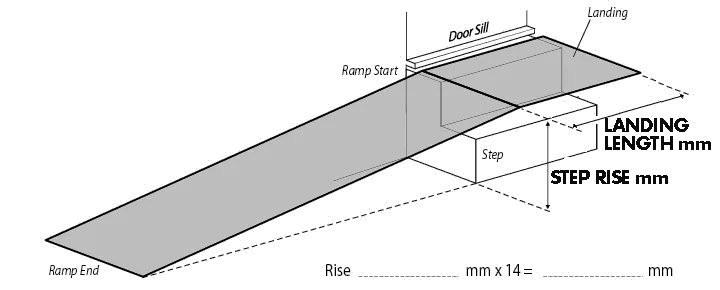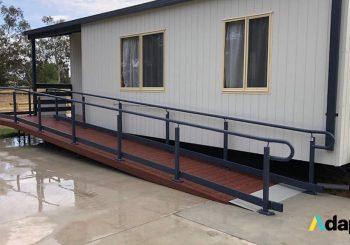In Australia, certain laws and regulations have been implemented to ensure that public ramps follow certain specifications. These aim to protect the safety of the people while providing them with better access to areas that are open to the public.
One of the specifications covered by these regulations is the gradient or slope of a ramp. Regulating the steepness of wheelchair and accessibility ramps helps ensure that these pathways can be easily and safely used by those who have mobility issues.
Calculating The Ramp’s Slope
As indicated in AS1428.1, the gradient of wheelchair ramps with lengths of over 1,900 milimetres should not exceed 1:14 and should not be less than 1:10. This slope ratio indicates that for every 14 metres across the length of the ramp, the slope height increases or decreases by 1 metre.
This gradient ratio was specifically selected to allow wheelchair users and those that rely on mobility aids to easily cross the ramp without getting too tired. It also complies with the capabilities of most powered wheelchairs and motorised scooters.
The overall slope of a ramp can be generally calculated by dividing its rise or vertical height by its overall length or horizontal distance. This formula will provide the ramp’s slope in the form of a fraction or a percentage. The greater the gradient, the steeper the ramp is.
If you’re just starting to build your ramp, you can calculate its length by measuring its vertical rise, which is the distance between the ramp’s highest and lowest points. Then, multiply this measurement by 14 and add the length of the level landing.
These simple formulas are helpful especially if you’re looking to build your own accessibility ramp at home. By determining the overall height and distance that the ramp needs to cover, you’ll be able to gauge the steepness of your ramp. More importantly, this method also helps you determine if your ramp complies with the DDA and AS guidelines.
Ramp Laws And Regulations
According to the Disability Discrimination Act (DDA), which was signed in 1992, it is unlawful to discriminate against individuals by limiting their access to public areas and certain aspects of life due to their physical activities.
Under this law, organisations, businesses, institutions, and government agencies have to make sure that their public facilities, establishments, offices, and other areas can be accessed by everyone. This means installing different types of ramps to allow people in wheelchairs and other mobility aids to easily access these places.
Aside from the DDA, certain provisions of the Australian Standards (AS) require buildings, facilities, and other structures to follow specific specifications when it comes to installing and constructing certain accessibility features, such as ramps.
One of these provisions, known as AS1428.1, covers all the necessary information regarding the required specifications of accessibility ramps.





